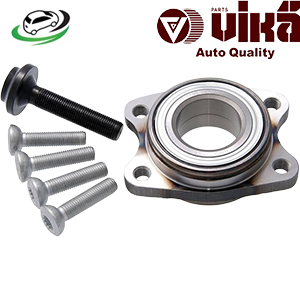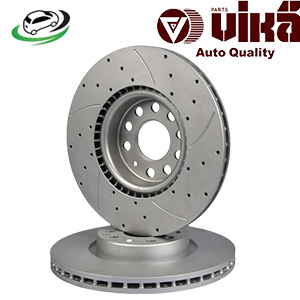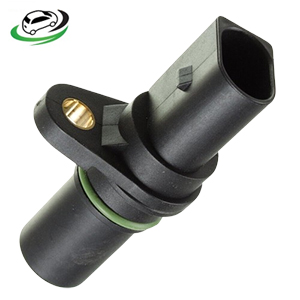-10%
Get Crankshaft Position Sensor AUDI 8U Q3/A3 8P/B8 A4/B8 A5/Q5/TT MKII / VW Beetle/CC/EOS/Golf V/Golf VI/Jetta VI/Passat B6/Tiguan 1/Tiguan 2 06H906433
The crankshaft position sensor (CKP sensor) is a crucial component in modern internal combustion engines. It plays a vital role in engine management, affecting everything from ignition timing to fuel injection. This guide delves into the crankshaft position sensor’s functions, construction, types, symptoms of failure, replacement procedures, and its overall importance in maintaining engine performance and efficiency.
What is a Crankshaft Position Sensor?
The crankshaft position sensor is an electronic device used to monitor the position and rotational speed of the crankshaft. It provides essential data to the engine control unit (ECU), which uses this information to optimize engine performance, including timing for fuel injection and ignition. The sensor ensures that the engine runs smoothly, efficiently, and reliably.
Functions of the Crankshaft Position Sensor
The crankshaft position sensor performs several critical functions in an engine:
- Engine Timing: The sensor provides real-time data on the crankshaft’s position and speed, which is essential for precise control of the ignition timing and fuel injection. Accurate timing ensures optimal engine performance and efficiency.
- Fuel Injection Control: By monitoring the crankshaft’s position, the sensor helps the ECU determine the correct amount of fuel to inject into the engine. This contributes to improved fuel economy, reduced emissions, and smooth engine operation.
- Ignition Timing: The sensor helps in adjusting the timing of the spark plugs to ignite the air-fuel mixture at the right moment. Proper ignition timing is crucial for maximizing engine power and minimizing knocking or pinging.
- Engine Diagnostics: The crankshaft position sensor plays a role in engine diagnostics by providing data that helps detect and diagnose engine issues. If the sensor fails, it can trigger diagnostic trouble codes (DTCs) and illuminate the check engine light.
- Engine Synchronization: The sensor ensures that the crankshaft and camshaft are properly synchronized, which is important for maintaining the correct timing of the engine’s valves and pistons.
Construction of a Crankshaft Position Sensor
A typical crankshaft position sensor consists of several key components:
- Sensing Element: The sensing element is responsible for detecting the rotational position of the crankshaft. It can be a magnetic or optical device, depending on the sensor type.
- Magnetic Pickup or Optical Encoder: In magnetic sensors, a magnetic pickup detects changes in the magnetic field caused by the rotating crankshaft. In optical sensors, an optical encoder with a rotating disc or wheel generates pulses that correspond to the crankshaft’s position.
- Signal Processor: The signal processor converts the raw data from the sensing element into an electrical signal that can be interpreted by the ECU. This may involve amplifying, filtering, and processing the signal.
- Housing: The sensor’s housing protects the internal components from environmental factors such as heat, vibration, and dirt. It is typically made of durable materials to withstand harsh operating conditions.
- Connector: The connector provides an interface between the sensor and the vehicle’s wiring harness. It allows for the transfer of electrical signals to the ECU.
Types of Crankshaft Position Sensors
There are several types of crankshaft position sensors, each with its own advantages and applications:
- Magnetic Inductive Sensors: These sensors use a magnetic field to detect the position of the crankshaft. They generate an alternating voltage signal as the crankshaft rotates, which is proportional to the speed and position of the crankshaft.
- Hall Effect Sensors: Hall effect sensors use a magnetic field and a semiconductor to detect changes in the magnetic field as the crankshaft rotates. They produce a digital signal that is easy for the ECU to process.
- Optical Sensors: Optical sensors use an optical encoder with a rotating disc or wheel that has slots or markings. As the disc rotates, an optical sensor detects changes in light transmission to determine the crankshaft’s position.
- Variable Reluctance Sensors: Variable reluctance sensors use a coil and a magnetic core to detect changes in the magnetic field caused by the rotating crankshaft. They produce an analog signal that varies with the crankshaft’s position and speed.
- Digital Sensors: Digital sensors provide a binary output signal that indicates the crankshaft’s position. They are often used in modern engines for their precision and reliability.
Symptoms of a Failing Crankshaft Position Sensor
A failing crankshaft position sensor can lead to various symptoms that affect engine performance and drivability. Common signs of a faulty sensor include:
- Check Engine Light: A malfunctioning crankshaft position sensor can trigger the check engine light on the dashboard. This light may indicate a problem with the sensor or other related components.
- Engine Stalling: If the sensor fails, the engine may stall or have difficulty starting. This is because the ECU is not receiving accurate data to control ignition timing and fuel injection.
- Rough Idling: A failing sensor can cause rough idling or uneven engine performance. This may be due to incorrect timing or fuel delivery issues.
- Misfiring: Engine misfires or hesitation during acceleration can occur if the crankshaft position sensor is not providing accurate information to the ECU.
- Difficulty Starting: Problems with the crankshaft position sensor can lead to difficulty starting the engine. The engine may crank but not start due to improper timing or fuel delivery.
- Poor Acceleration: A faulty sensor can affect engine performance, leading to sluggish or poor acceleration. This is often due to incorrect timing or fuel injection issues.
Consequences of Ignoring a Faulty Crankshaft Position Sensor
Neglecting to address a faulty crankshaft position sensor can lead to several serious consequences:
- Reduced Engine Performance: A malfunctioning sensor can affect engine performance, including reduced power, acceleration, and fuel efficiency. This can lead to a less enjoyable driving experience and increased fuel consumption.
- Increased Emissions: Incorrect timing and fuel injection due to a faulty sensor can lead to increased emissions and contribute to environmental pollution. This may also cause the vehicle to fail emissions tests.
- Engine Damage: Prolonged operation with a faulty sensor can potentially lead to engine damage. Incorrect timing and fuel delivery can cause knocking, overheating, and increased wear on engine components.
- Safety Risks: Engine stalling, poor acceleration, and other performance issues can create safety risks, especially in high-speed or emergency driving situations. It is essential to address sensor issues promptly to ensure safe vehicle operation.
Replacing a Crankshaft Position Sensor
Replacing a crankshaft position sensor is a task that can often be performed by a skilled DIY mechanic or professional technician. The general steps for replacing the sensor include:
- Locate the Sensor: The crankshaft position sensor is typically located near the crankshaft or the engine block. Consult the vehicle’s service manual for the exact location.
- Disconnect the Battery: For safety reasons, disconnect the vehicle’s battery before working on the sensor. This prevents electrical shorts and potential damage to the vehicle’s electrical system.
- Remove the Old Sensor: Disconnect the electrical connector from the old sensor. Remove any mounting bolts or fasteners that secure the sensor in place. Carefully extract the old sensor from its mounting location.
- Install the New Sensor: Position the new crankshaft position sensor and secure it in place with the mounting bolts or fasteners. Reconnect the electrical connector to the sensor.
- Reconnect the Battery: Reconnect the vehicle’s battery and ensure that all electrical connections are secure.
- Test the Vehicle: Start the engine and test its performance to ensure that the new sensor is functioning correctly. Check for any error codes or warning lights on the dashboard.
Choosing the Right Crankshaft Position Sensor
When selecting a crankshaft position sensor, it’s important to choose a high-quality part that matches your vehicle’s specifications:
- OEM Sensors: Original Equipment Manufacturer (OEM) sensors are designed to meet the exact specifications of your vehicle. They offer reliable performance and compatibility with your engine.
- Aftermarket Sensors: Aftermarket sensors can vary in quality, so it’s important to choose a reputable brand. Look for sensors that have been tested for reliability and performance.
- Compatibility: Ensure that the sensor you choose is compatible with your vehicle’s make, model, and engine type. Verify the part number and specifications before making a purchase.
Follow us on Facebook for more parts.



